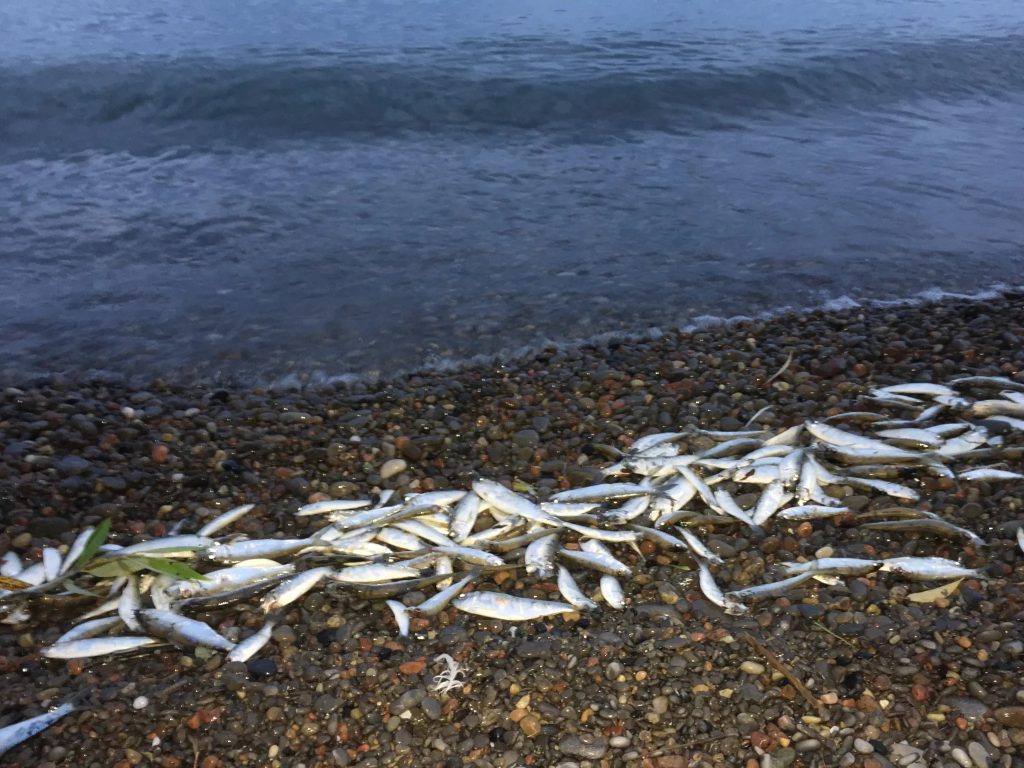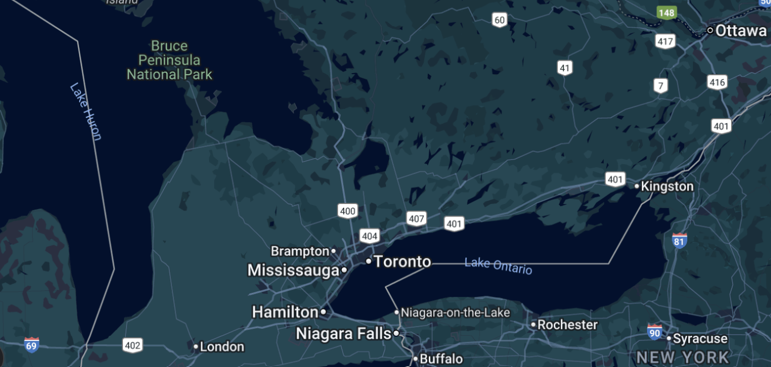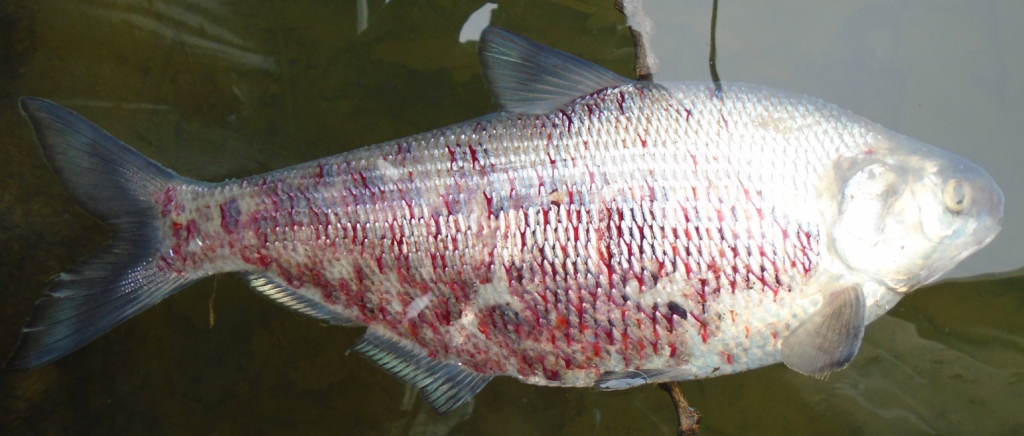Picture this scene: It’s early spring 2025 along the shores of Lake Ontario and Lake Huron in Ontario, Canada, thousands of dead fish suddenly wash ashore. Residents from over 300 km of shoreline began posting photos and videos in early spring 2025, prompting local and scientific attention. Why did it happen, and what does this mean for aquatic health, biodiversity, biosecurity, and habitat management?
What made the news: spring fish die-offs in Ontario
In Lake Ontario, startling images of dead alewife, a small silver fish invasive to the Great Lakes, circulated widely in May 2025. Conservation authorities confirmed that these die‑offs, while distressing to see (and smell), were part of a regular seasonal cycle and not pollution-related. Across Lake Huron, similar events occurred, but experts flagged a potential cause behind the fish deaths that went beyond natural spawning stress. Thousands of carcasses, including gizzard shad, rainbow trout, yellow perch, and others, washed ashore along Ontario’s stretch of Lake Huron. Scientists suspect viral haemorrhagic septicemia (VHS), a deadly disease of freshwater fish, as a possible source.

Thousands of alewives washed ashore. Photo provided by author. Source: Globalnews.ca
Why Lake Ontario’s die‑off was considered “normal”
Alewife (Alosa pseudoharengus) is an invasive species introduced via the Welland Canal in the late 19th century. Every spring, they move from deep, cold waters to warm shallow areas to spawn. This past spring, storms stirred deeper, colder water upward, shocking alewives that were already stressed from spawning and the lingering effects of a harsh winter. This led to high mortality near shorelines.
Experts emphasise that this pattern happens yearly. Winter on the Great Lakes typically includes heavy ice and snow cover, which can weaken fat reserves and oxygen levels in fish surviving in deep water. This creates a “pre-condition” stress. Then, rapid warming followed by storm-driven upwelling amplifies the thermal shock. Provincial authorities reassured residents that these events aren’t surprising and typically resolve naturally as conditions stabilise.
Nature’s clean-up crew also quickly steps in — scavenger birds and currents usually remove most carcasses before they are noticed, and decomposition returns nutrients to the ecosystem. However, emerging studies suggest that upwelling may reshape microbial dynamics in ways we’re only beginning to understand.
This year’s die-off stood out because alewives were doubly stressed: firstly, by a record ice-heavy winter, and secondly by the powerful storm‑driven cold-water shocks to spawning fish. On top of that, the population of alewives is growing, which makes mortality more visually dramatic.
When die‑off might be more than just weather

Google Maps image showing Lake Ontario and Lake Huron,
where massive fish die-offs have recently been reported.
Photo provided by author.
Unlike Lake Ontario, the die‑off in Lake Huron in 2025 was more alarming. While gizzard shad tend to die in large numbers during spawning, local researchers noted multiple species involved, not typical for natural mortality. Photos showed bright red haemorrhagic spots consistent with VHS infection, and even mudpuppies (aquatic salamanders) were found dead, unusual signs for only a weather event.
Viral hemorrhagic septicemia is a viral disease affecting over 50 freshwater species. It was first discovered in the Great Lakes in the 1980s and has caused major fish kills throughout the waters since the early 2000s. The suspected Lake Huron strain (Type IV‑b) already circulates across the region and is highly virulent in multiple fish, including perch, trout, shad, and bass, but is safe to humans and mammalian pets.
Testing was underway in spring 2025 by the Canadian Wildlife Health Cooperative based in Guelph, ON, with authorities urging shoreline users and anglers to clean and disinfect gear to avoid accidentally spreading the virus to other lakes.
Recognising signs of Viral Haemorrhagic Septicemia (VHS)

Fish infected with viral haemorrhagic septicemia. Photo provided by author. Source: USGS
Viral haemorrhagic septicemia is a highly contagious disease and can be found in both freshwater and marine fish across the Northern Hemisphere. Infected fish may display a range of visible symptoms, including:
- Pale gills or internal organs, indicating poor oxygenation
- Red or dark haemorrhagic patches on the skin, fins, or internal organs
- Bloated abdomens, often caused by fluid build‑up
- Bulging eyes, a condition known as exophthalmia
- A darker body colour overall
It’s essential to note that some fish can carry the virus without exhibiting obvious signs. This silent spread is one reason biosecurity and proper disinfection of boats and gear are critical to protecting lakes and rivers.
What this means for aquatic health, biodiversity, biosecurity, and balanced habitat management
Why these fish die-offs matter for the whole ecosystem
Mass mortality events like the 2025 Great Lakes die-off aren’t just grim shoreline scenes — they’re warning signals from the ecosystem.
Though invasive, alewife are still part of the Great Lakes’ current food web. Their sudden die-off — especially in such high numbers — can disrupt predator diets, nutrient cycles, and microbial communities. Meanwhile, the decomposition of these fish may alter shoreline chemistry and can spike bacterial activity in nearshore waters, sometimes affecting water quality for other wildlife.
At the heart of it all is shifting climate dynamics. Warmer winters followed by abrupt cold snaps create unpredictable, high-stress conditions for aquatic life. Ice cover, once a stabilising factor, is becoming erratic. Upwelling events are now stronger and more frequent. These shifts don’t just kill fish — they can reshape the biological rhythm of entire freshwater ecosystems.
Going forward, habitat management isn’t just about conservation — it’s about defence. Maintaining oxygen-rich shallow zones, restoring native species diversity, and controlling invasives are all part of building environmental resilience. A healthy, balanced lake is far better equipped to absorb shocks — climatic or biological — without breaking.
In short, these die-offs are indicators of a system under pressure. And a call to take the health of our shared waters seriously, to help avoid a ripple becoming a wave.
Biodiversity threats and ecosystem balance
- Seasonal die‑offs like those in Lake Ontario don’t threaten long-term biodiversity, but repeated heavy die-offs, especially of invasive species, can influence local food webs, nutrient availability, and entire ecosystems.
- In Lake Huron, a confirmation of VHS could threaten native species, gravely reduce fish stocks, impact food web dynamics, and cause economic losses in fisheries across the Great Lakes basin.
Biosecurity lessons
- Stressed environments can create entry points for disease. Pathogens like VHS spread more easily when fish populations are weakened or when carcasses linger in water.
- Fish diseases often move unnoticed until a visible die-off hits. In many cases, major outbreaks can occur without clear symptoms, getting attention only after visible effects become apparent.
- Quick reporting, testing, and public outreach — such as disinfection protocols — are critical to preventing spread across water bodies and preserving lake and river health.
- Agencies on both sides of the North American border (Canada and the U.S.) must coordinate responses under frameworks like the Great Lakes Fishery Commission.
Moving from spectacle to stewardship
The mass fish wash-up on the shores of Lake Ontario and Lake Huron in spring 2025 made for dramatic headlines, but the real story is what was happening below the surface. It’s a reminder that our lakes are living systems; delicate, interconnected, and sometimes vulnerable in ways we don’t immediately see. Weather, invasive species, and animal diseases don’t operate in isolation; they weave together in ways that can tip the balance overnight.
Protecting these ecosystems is about knowing when a “normal cycle” is happening and when something has gone wrong. That means science-based monitoring, agencies ready to respond quickly, and everyday people noticing and reporting what they see.
By paying attention, reporting promptly, and supporting habitat resilience, we can ensure that even unsettling sights become opportunities for learning, protecting, and strengthening biodiversity, not just in Canada, but as part of a global conversation on biosecurity, animal health and ecosystem health.
Main featured image: unsplash/jackcharles.
The Animal Echo aims to promote individual and collective understanding of animal health and welfare. We bring you insights and opinions from experts across the world. The opinions expressed in The Animal Echo are those of the author (s) and may not necessarily reflect WOAH’s official position.










